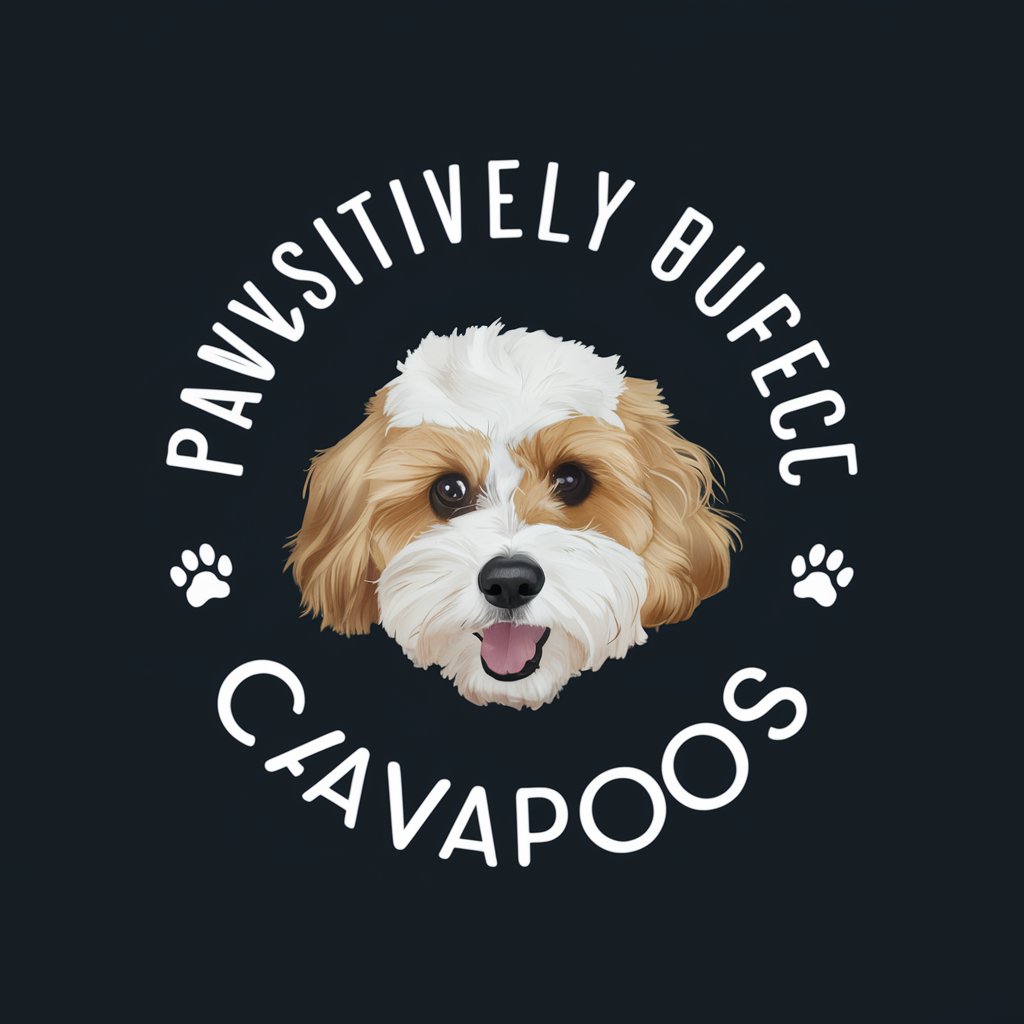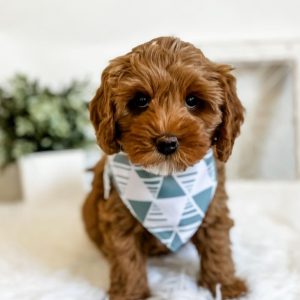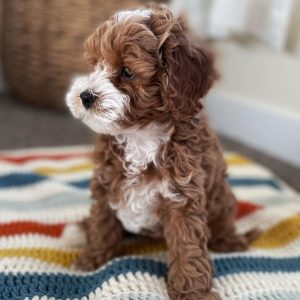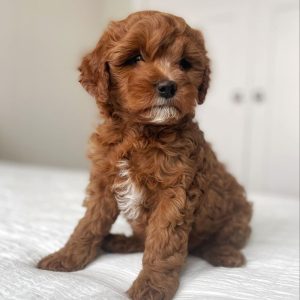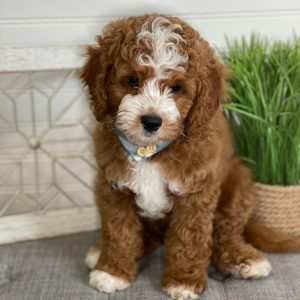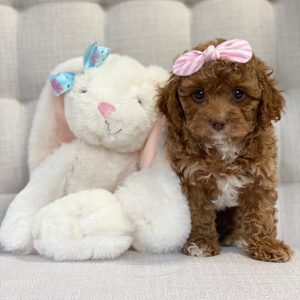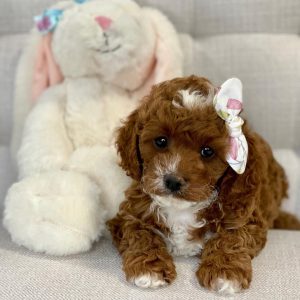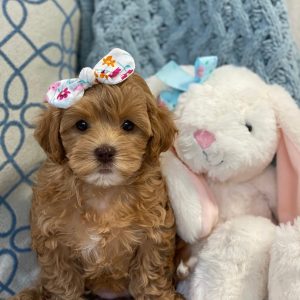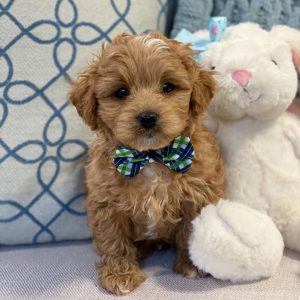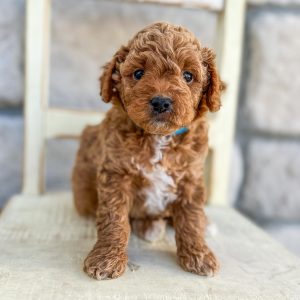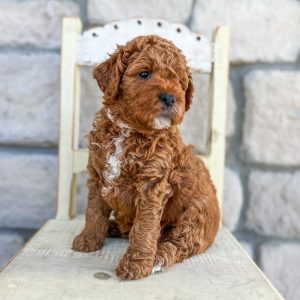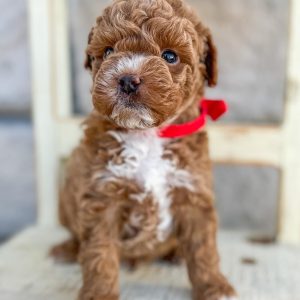Separation Anxiety in Cavapoo Puppies: Learn tips for training, comforting, and preventing anxiety to help your Cavapoo feel secure when you’re away
Separation anxiety is a common issue in Cavapoos, as they are highly social and bond closely with their owners. When left alone, they can become anxious and exhibit behaviors that are indicative of separation anxiety. Here are some signs, causes, and strategies for managing separation anxiety in Cavapoos:
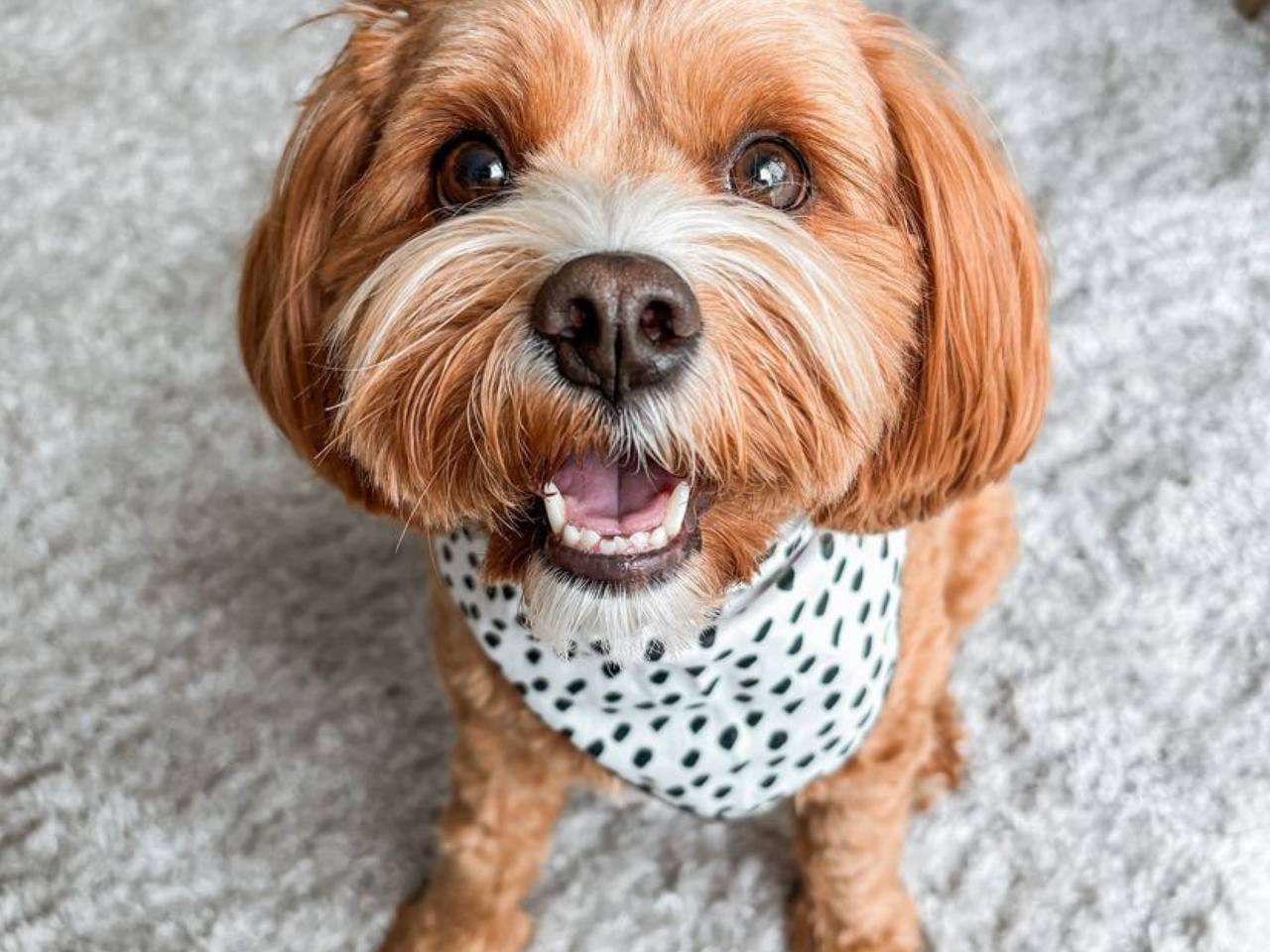
Signs of Separation Anxiety
- Excessive Barking or Howling: Vocalizing excessively when left alone.
- Destructive Behavior: Chewing furniture, shoes, or other household items.
- Pacing: Repeatedly walking back and forth.
- House Soiling: Urinating or defecating indoors despite being house-trained.
- Panting and Drooling: Increased salivation and rapid breathing.
- Escape Attempts: Trying to escape from their crate or the house, sometimes resulting in self-injury.
- Following Owners Around: Clinginess and following owners from room to room when they are at home.
Causes
- Strong Attachment: Cavapoos form strong bonds with their owners and thrive on companionship, making them more susceptible to anxiety when separated.
- Changes in Routine: Sudden changes in the household routine, such as a new job schedule or moving to a new home, can trigger anxiety.
- Lack of Socialization: Inadequate socialization during puppyhood can lead to fear of being alone.
- Past Trauma: Dogs that have experienced abandonment or frequent rehoming may be more prone to separation anxiety.
Strategies for Managing Separation Anxiety
- Gradual Desensitization:
- Short Absences: Start by leaving your Cavapoo alone for short periods and gradually increase the duration. Begin with a few minutes and slowly work up to longer periods.
- Predictable Departures: Make your departures and returns low-key to avoid causing excitement or anxiety. Ignore your dog for a few minutes before leaving and after returning.
- Create a Safe Space:
- Comfortable Environment: Provide a comfortable, safe space for your dog, such as a crate or a specific room with their bed, toys, and water.
- Familiar Items: Leave items with your scent, like a worn t-shirt, to provide comfort.
- Mental and Physical Stimulation:
- Exercise: Ensure your Cavapoo gets plenty of physical exercise before you leave. A tired dog is less likely to become anxious.
- Toys and Puzzles: Provide interactive toys and puzzles to keep your dog occupied while you’re away. Treat-dispensing toys can be particularly effective.
- Training and Commands:
- Independence Training: Encourage your dog to be independent by teaching them to stay in a different room while you are at home.
- Calm Behavior: Reward calm behavior and gradually increase the distance and time they spend away from you.
- Professional Help:
- Training Classes: Enroll in obedience classes to improve your dog’s confidence and behavior.
- Behaviorist: Consult a professional dog behaviorist for tailored strategies and support.
- Veterinarian: In severe cases, your vet may recommend medication to help manage anxiety.
- Consistent Routine:
- Daily Schedule: Maintain a consistent daily routine for feeding, walks, and playtime. Predictability can reduce anxiety.
- Tech Tools:
- Pet Cameras: Use pet cameras to monitor your dog’s behavior while you’re away and to interact with them if necessary.
- White Noise: Leave a TV or radio on to provide background noise, which can be comforting.
By implementing these strategies, you can help your Cavapoo feel more secure and reduce the likelihood of separation anxiety. It may take time and patience, but with consistent effort, your Cavapoo can learn to be more comfortable when left alone.
